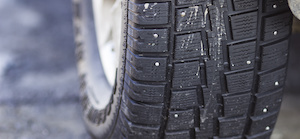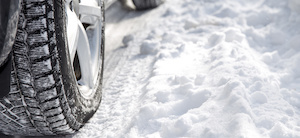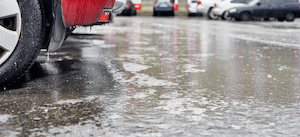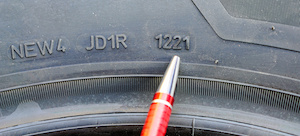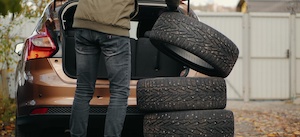How to Find the Right Winter Tires
Oct. 4, 2022
Oct. 4, 2022
Winter roads can be treacherous. Therefore, it’s essential to equip your vehicle with the right tires to ensure a good driving experience. There’s nothing like a well-shod car when driving on snow- and ice-filled roads!
Here are a few characteristics to look for when shopping for winter tires.
The Tire Grip
The term grip describes how well the tires adhere to the road while driving.
This is probably the most important characteristic because it determines whether your tires can withstand various temperatures and rough road conditions.
The Traction Index
Transport Canada has precise specifications on what makes a winter tire. For example, winter tires must achieve a traction index of at least 110 to be considered suitable for driving in cold temperatures. This is the ASTM F1805-12 standard, which was established by the ASTM International organization, and is relied upon by the Canadian Ministry of Transport.
The traction index defines how much grip a tire has on wet roads. In other words, it can tell you a lot about how well the car will brake. Here’s the scale that classifies each level:
| AA |
Best traction |
| A |
Second-best traction |
| B |
Third best traction |
| C |
Fourth best traction |
Approved winter tires are marked with the following symbol to help you find them when shopping:

Image from Quebec’s Ministry of Transport website
To ensure a good grip, you should install winter tires on your vehicle once the mercury drops below 7 °C.
What Are Winter Tires Made Of?
Although winter tires look like they’re made of one single piece of material, they’re actually composed of several, including:
- Elastomers
- Reinforcing fillers
- Reinforcing materials
- Others
The first category is probably the most visible on a tire: rubber. Tires are generally made from two types of rubber: synthetic and natural.
The second category is often a powder, although you can’t see it with the naked eye. This includes several materials, such as carbon black, silica and chalk.
The reinforcing materials are a combination of polyester, rayon, nylon and steel, which combine the strength of textile and metal.
The last category comprises many materials, like plasticizers, anti-aging agents and other chemical products, but in smaller quantities.
Types of Tires – Studded
Whether you call them studded or spiked tires, they refer to the same thing. The tires are covered in small studs that provide added grip on the road.
Studded tires are ideal for people who live in rural areas. The studs allow the tires to grip unploughed roads that aren’t regularly coated in de-icing salts.
If you regularly drive on steep hills, you may also want to consider installing studded tires to improve grip.
There are several laws surrounding studded tires, even in provinces where winter tires aren’t mandatory.
In Ontario, you can drive with studded tires from October 1 to April 30 only if your address (associated with your car) is located in the north of the province. Consult Ontario’s official website to find out where studded tires are allowed in the province.
In Quebec, studded tires are permitted from October 15 to May 1 for passenger vehicles, cabs and commercial vehicles whose total mass doesn’t exceed 3,000 kilograms.
New Brunswick allows studded tires between October 15 and May 1.
In Nova Scotia, you can drive with studded tires between October 15 and May 31. However, there are several rules regarding studded tires. Refer to the province’s website for the details.
Prince Edward Island allows studded tires between October 1 and May 31. However, some other regulations may apply.
Newfoundland and Labrador typically allow studded tires between November 1 and April 30. However, in 2022, this period has been extended to May 31.
Types of Tires—Snow
Just as studded tires are perfect for rural driving, snow tires are ideal for driving in remote areas. As the name suggests, snow tires handle extremely well on snow-covered roads.
Types of Tires—Ice
Conversely, ice tires are best if you live in the city because paved roads are more often covered with ice. Consequently, ice tires perform best on snow-cleared roads.
The Lifespan of Winter Tires
Like summer and all-season tires, winter tires have a limited lifespan. However, they’re there’s no legal framework surrounding it. You must therefore rely on the good judgment of your mechanic, as well as on certain data and benchmarks that exist in the industry.
- It’s strongly recommended to start checking your tires annually, or even more often, after 5 years of use.
- It’s recommended to get new winter tires after six years. It’s, therefore, best to avoid installing and purchasing them past this point.
- Some tires can last as long as 10 years. However, this is rare. It’s important to inspect them regularly (annually or biannually) to make sure you’re driving safely.
Good to Know
There’s one piece of information you can always refer to: the date the tires were manufactured. This information is called a DOT code and is moulded into the tire’s sidewall.
The DOT symbol contains a four-digit code. The first two digits indicate the week of the year the tire was made and, therefore, cannot exceed 52, and the last two indicate the year.
How You Use Your Tires
How you use your tires can impact their lifespan. Although your tire’s age can be a good indicator of their life expectancy, if you put tens of thousands of miles on them yearly and constantly drive on damaged roads, you may need to replace them more often.
As you can see, several elements factor into the equation.
Current Laws
In most Canadian provinces, winter tires aren’t mandatory. Quebec, however, requires all vehicles with a Quebec licence plate to be outfitted with winter tires from December 1 to March 15.
British Columbia has also legislated the use of winter tires, but only on certain highways.
Some provinces strongly suggest the use of winter tires, including New Brunswick. However, they don’t legislate it. There are also winter tire requirements for certain types of vehicles. The laws are different in every province. Therefore, we suggest visiting the official website of your provincial government to determine the current rules and recommendations.
Uninstalling Winter Tires
Aside from the rules and regulations surrounding studded tires and those that determine when you must equip your vehicle with winter tires (Quebec and British Columbia), there are better times than others to remove them. It’s best to wait until the average temperature in the spring is 7 °C or warmer before putting your all-season or summer tires back on.
Choosing the right winter tires is a big responsibility. It’s always a good idea to ask your mechanic if you have any questions. The more you know, the easier it will be to make the right choice!






